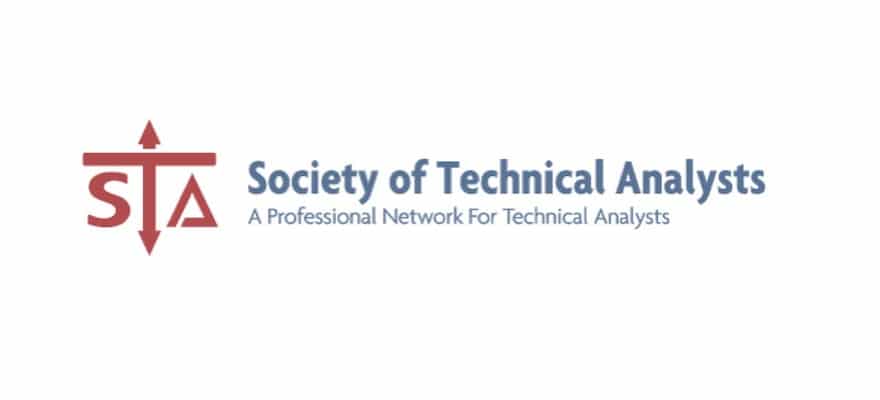Technical analysis continues to be a sought after skill in 2020. As part of a truly global skill, the financial market continues to place a premium on this type of analysis, helping traverse every asset class.
Finance Magnates spoke with Eddie Tofpik, Head of Technical Analysis & Senior Markets Analyst at ADM Investor Services International for his perspective on Technical Analysis.
Additionally, he explains the importance of the Society of Technical Analysts (STA) and its impact on the financial world.
In what ways does technical analysis differ across regions?
Technical Analysis has a wide and varied congregation internationally. It is embraced by all layers of the financial and non-financial community from individual retail traders and investors through financial and non-financial companies who utilise it to manage exposure in all sorts of products right up to the big national and multinational banks, corporations and Governments.
I personally send and have sent my analysis to senior heads of Governments and see nothing unusual in that as they wish to have ALL the information available in order to make decisions.

Eddie Tofpik, Head of Technical Analysis & Senior Markets Analyst at ADM Investor Services International
Interestingly, there are some regional differences throughout the World. If you were to ask me where TA originated from, then I would have to say Japan with Munehisa Homma and Candlestick Charts from the mid 1700’s.
This is still very, very strong in Asia…whereas in the USA we have many who follow relatively more recent proponents such as Dow Theory from Charles Dow, Elliott Wave Theory, Gann and more recently Market Profile from J. Peter Steidlmayer.
What makes emerging markets unique relative to the established market in Europe?
I think in this it is data! In TA the first thing we need is data. A market’s open, high, low, close and volume…and everything else that goes with that.
In Developed Markets we already have that whilst in Emerging Markets whether they are currencies, fixed income, commodities or stock markets…these are not so readily available or always so trusted.
However, this is changing and whereas on the past some markets had technicians scratching their heads in how to fathom what was going on…that’s not the case nowadays!
Personally, I prefer looking at Emerging Markets in some ways, I suspect it is because fewer people look at them from a Technical Analysis point of view and so to my mid they are ‘cleaner’ and Technically more responsive markets.
Cryptocurrencies provide a wide range of challenges for traditional analyses – in what ways is technical analysis different for crypto relative to other asset classes?
There are some unique challenges for a technician in Cryptocurrencies…and this is from someone who has analyzed and published analysis on Bitcoin since 2015.
If we take the example of a common currency pair such as spot Euro versus the U.S. Dollar, we have a fragmented and illiquid market which trades just about everywhere.
Whilst true volume is not readily available, it nevertheless has a defined or at least accepted Daily Open, High, Low and a Close of sorts. This is not the case with Cryptocurrencies.
They trade 24 hours every single day of every year. Where do you have the O/H/L/C? Most force an open and close…but with big moves over a weekend, it makes it challenging…but not insurmountable (I know…I’ve utilised TA on Bitcoin…and it works!).
What are the benefits of STA and recognized examination?
The STA is one of the largest and oldest Technical Analysis organisations in the world. Established in 1969, it has approximately 1100 members around the world and membership is as an associate member (without exams), full member (passing Parts 1 & 2 of our Diploma examination) or a Fellow.
Anyone can join whether they are a student, private investor or a financial professional. Fees are from GBP 70 for an Associate to GBP 90 for a full Member.
We also have a thriving International Membership. Membership as a full Member or Fellow entitles the use of MSTA or FSTA after their name.
Associate Members, Members and Fellows enjoy the benefits of 11 monthly meetings in the City of London, the benefits of the ‘Gold Standard’ teaching and examination from our Education division.
Those unable to attend can view our meetings online, there’s an online student forum, a twice a year e-Journal, access to our Library of over 1150 books, discounts to events…TA books and software.
Finally, the STA is endorsed by the Chartered Institute for Securities and Investment (CISI) and members can receive CPD for attending lectures and seminars.
As for our Diploma, it is as I’ve mentioned, the ‘Gold Standard’ of Technical Analysis courses and allows those who pass to say…YES! I AM a qualified Technical Analyst.
What trends do you see evolving for technical analysis in 2020?
This is an interesting question is these strange times. There is much that commends the traditional forms of TA.
However, I have to say that one of the most popular recent developments that has been written and spoken about often is Ichimoku…or to give it its full name Ichimoku Kinko Hyo from Japan.
I also saw one of the most respected Technical Analysts in the world, John Murphy of the U.S. give a strong argument for Intermarket Technical Analysis.
Then there’s my good friend Trevor Neil’s Relative Rotation Graphs which seem quite popular and finally I have to mention in these volatile times the work of W. D. Gann and especially ‘Financial Timetable’ constructed in 1909 and which is still so accurate today.
















